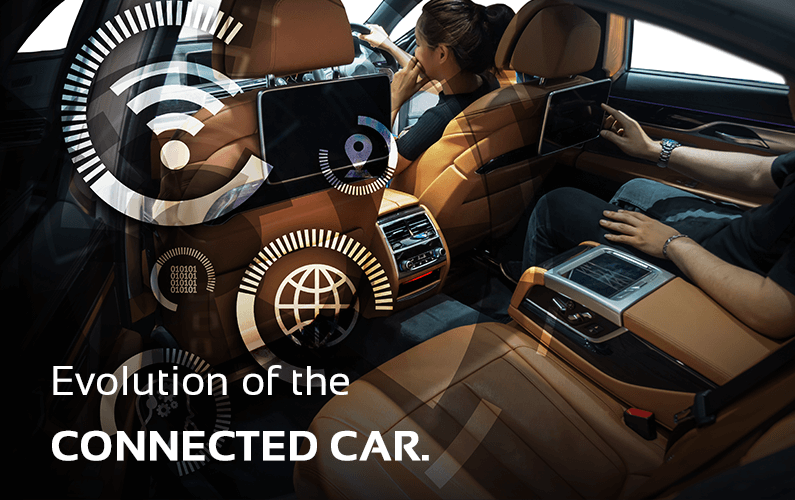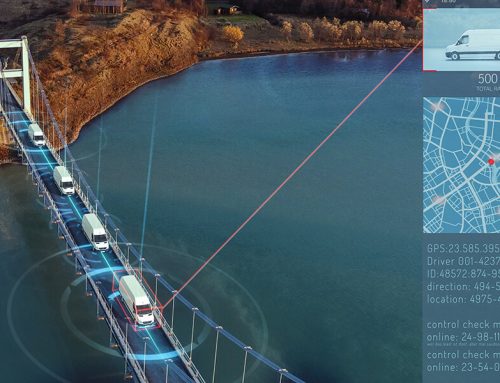The Evolution of Auto Industry and the Connected Car Movement
Throughout history, technology and communication has not had a significant impact in the way our cars keep connected as it has in recent years. The process of human communication has really evolved with invention of new and sophisticated devices each day. It was just the other day when people could only communicate using letters, appointments and telephone booths. Now, you can stay connected at the comfort of your home or car. Once upon a time, drivers and passengers had limited options for staying connected while on their journeys. Now we have what we call Internet of Things (IoT).
First Connect Car Technology & Connected Car Timeline
The first true technological way of connecting vehicles came into existence in 1911 when the first automobile company installed electric starters into vehicles. This first successful way of wiring cars gave rise to several other advancements in automobile industry such as the cigarette lighter which arrived in 1925, the radio in 1930, the 9 track player in 1965, the cassette deck in 1970 and the airbags in 1984. The dashboard computer diagnostics came in 1994 and the GPS navigation systems in 1995. The series of activities did not stop here, in 21st century, the Bluetooth car connectivity, the USB ports, the Wi-Fi ideas sprouted and gave rise to the connected cars of today.
Today’s generational need for more sophisticated and advanced car has led to the full connectivity of cars. New automobiles are connected in 2 ways. They are either embedded or tethered. Embedded vehicles use a built in antenna and chip-sets to offer connectivity, while a tethered vehicle use’s hardware to allow drivers to connect their smartphone’s.
In this era, perhaps the most significant example of transformation in the automobile is part two of Tesla’s master plan to create an electric car with solar roofs and integrated battery storage to make it 10 times more efficient. This is a milestone in the automobile industry, which promises much more in the future.
The Autonomy of Connected Cars
The other next big thing is the introduction of self-driven cars (Autonomous cars). These cars can drive themselves in traffic jams by simply analyzing the lane ahead of them and moving appropriately. IoT has really changed things. It is now possible to summon your car in a small space through a Smartphone, a smart watch or even by the use of the key fob. This is the type of connectivity the automobile industry is promising the world, the use of wireless controls and communication to each other. The car can use instruments that use radar or ultrasounds to detect an obstacle or another car in front, back and sides. The only existing problem with this technology is the fact that the range of the sensors is limited to a few lengths and it cannot sense beyond this point.
Most of the cars in our time have app integration that can help in tracking lost cars once integrated with the GPS car tracking devices. You can integrate your GPS car tracking devices to your Smartphone because they are more affordable and flexible. There is no hardware that is needed to connect between the GPS car tracking device and your Smartphone. Smartphone car tracking based apps give a clearer picture of real time location and driving behaviors such as over speeding, overlapping and much more.
What many parents realize today is that smartphones, cars and a teen driver are a bad combination. The evolution of communication has left it simple for parents and teen drivers to download apps that track and score the performance of the teen driver every time they are behind the wheel. Cars are becoming more connected and parents are becoming more aware now with the ability to view real-time information on their teen drivers.
Connected Car Apps For Drivers & Parents
Apps such as Apple CarPlay and Android Auto are the best solutions for parents. Parents can download the app on their teen driver’s phone and enable Do Not Disturb While Driving coupled with parental controls enabling them to manage all the activities that are taking place in their vehicle. Parents can control the volume of audio in the car, apps and more. By using these apps Parents & Drivers can continue to use their mobile phones while driving and avoid obstructions due to driving while handling their phone.
With the advancements in the communication technology, it is now easier for vehicles to talk to each other. The main reason for vehicle-to -vehicle communication is to give information and to update each other on the existing conditions on the highways. The vehicles will use wireless transmission of data and inform about the position of the vehicle, brake status, steering wheel position and speed to one another using an ad hoc mesh network. The driver will simply receive an early warning notification in case there is any risk of an accident along the way or if the driver should take any preemptive actions such as slowing down or breaking to avoid the accident. The warning may come to the driver as an audible alert or a dashboard notification that flashes in the instruments panel for any potential problems.
Connected Car Movement within the Government
In United States, the government is working tirelessly with the Department of Transportation (DOT) and the National Highway Traffic Safety Administration (NHTSA) to make it a success. The government is considering this technology as a very important part of the Intelligent Transport System which can be used to improve traffic management by allowing vehicles to communicate with traffic lights and roadway signs.
Connected Car GPS Tracking
Another important aspect of the application of the evolving technology in automobile industry is the use of GPS car tracking systems to control the area in which your cars should be operating. Through this, you are able to have a direct access to the whereabouts of all your cars at the same time. This is an emerging GPS technology with an array of use for business and consumer applications. The company or individual is able to set an electronic fence so that when the company truck or vehicle passes through these boundaries the control center or owner will be notified and can take relevant action. When the vehicles leaves for business or location in the morning, their location is logged in and an email or an SMS notification is sent to the recipient throughout the day.
GPS LEADERS GPS Tracking Systems offer features such as real-time location data, historical vehicle trails and an accelerometer for motion sensing, driver behavior, impact detection and instant hard breaking. This technology has advanced beyond basic GPS technology. It is able to detect vehicle movement and warn the driver of his/her reckless driving. Despite warning the driver, the management should also know about the issue and take relevant actions against the driver.
The GPS system installed on vehicles is also evolving day by day. It is now possible to remotely disable your car at the comfort of your house. Most of the time you let your family member go out with the family car and you are left at home wondering if they will be careful. As long as your car is fitted with GPS car tracking devices from experienced GPS solution companies such as GPS LEADERS , you will be able to monitor their behavior and stop the car if need arise. With a combination of Apple CarPlay or Android Auto and GPS Tracking we are able to now track location, speed, overlapping, loud music in the car and other reckless driving behaviors. You can use these new types of Connected Car applications to further improve your new vehicle ownership experience and teen driver monitoring.
Connected Car Biometric Technology
Another Connect Car Concept that is now starting to make traction is Biometric technology. The automobile & fleet industry has faced several security threats ranging from theft, murder of drivers and passengers. Due to these loopholes, Biometric technology was developed to reduce these cases. Under the contract with the US government in 1960, Woodrow W. Bledsoe developed the first semi-automatic face recognition system. This made a very remarkable step in the adoption of face recognition in securing the car doors.
Many car manufacturers are considering implementing biometrics in the driver’s ownership experience. In 2011, at the Tokyo Motor Show, the IMIRAI concept was introduced by Mitsubishi. IMIRAI is a biometric vehicle capable of controlling various aspects of the vehicle’s access & dashboard settings. The technology is promising and a great step towards implementing biometric markers such as the owner’s fingerprints, body & facial features to lock down various aspects of the vehicle such as the doors. When anyone other than the authorized driver tries to access it they will be unable to open the vehicle’s doors. This will ensure a personalized experience with your car. After the car reads your biometric information, it then automatically adjust everything from with the cockpit from seats, to mirrors, and music according to the custom settings. This technology will also stop potential thieves since nobody else apart from the authorized person can access the car. The driver will have peace of mind when the car is at the parking lot. The system can also observe your heartbeats, blood pressure and other vital signs therefore this will prevent accidents by either reducing the speed or alerting the proper emergency.



